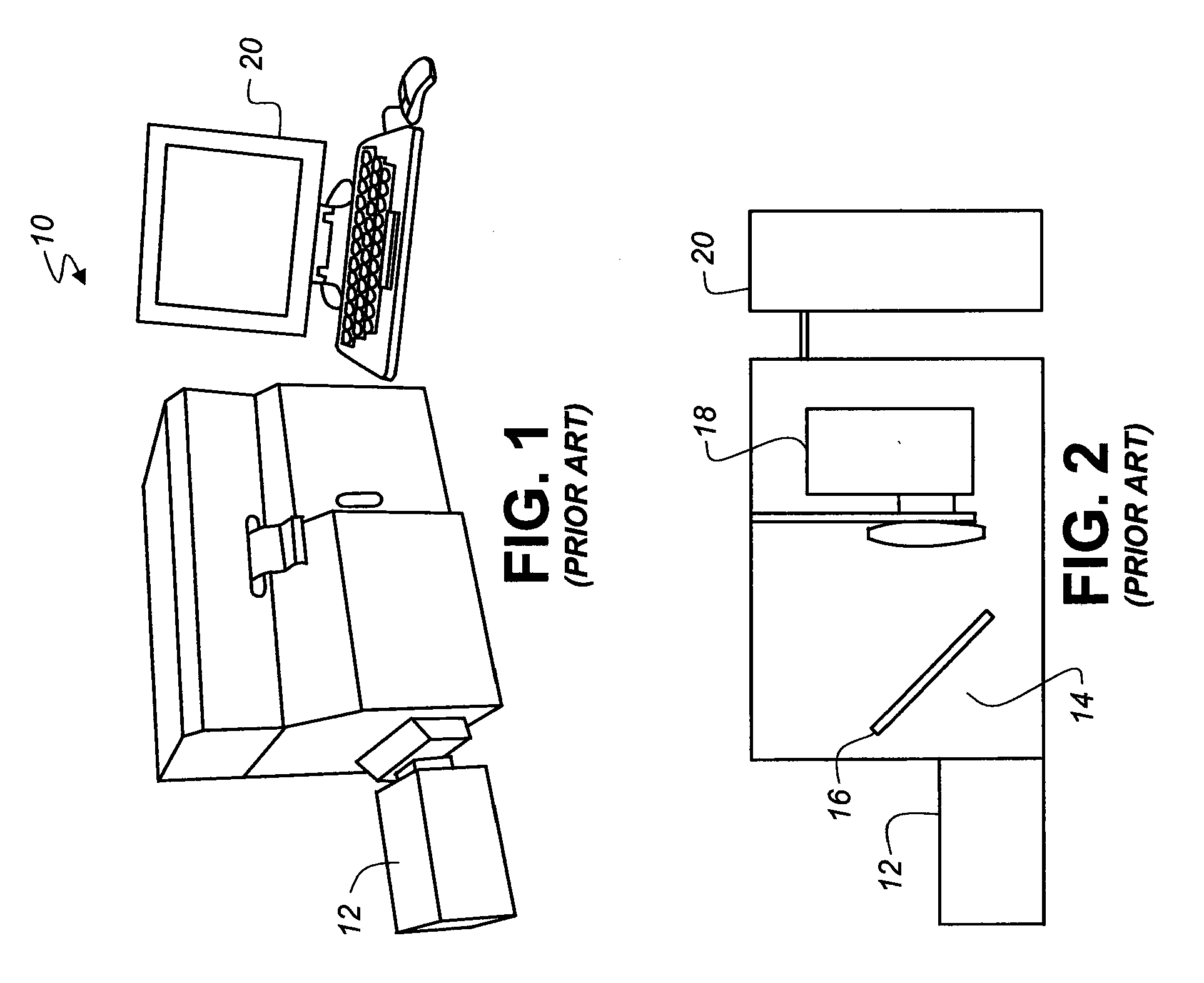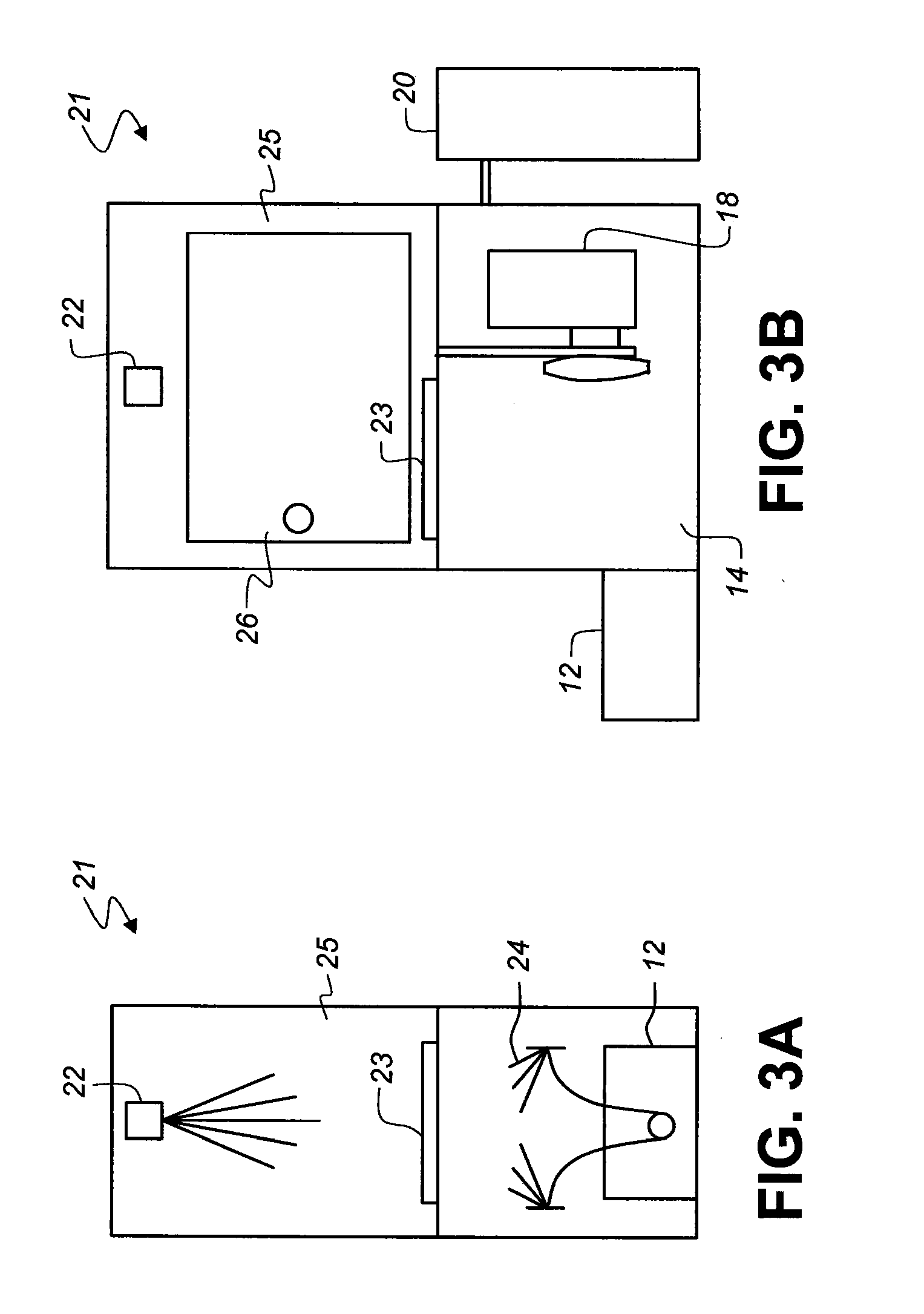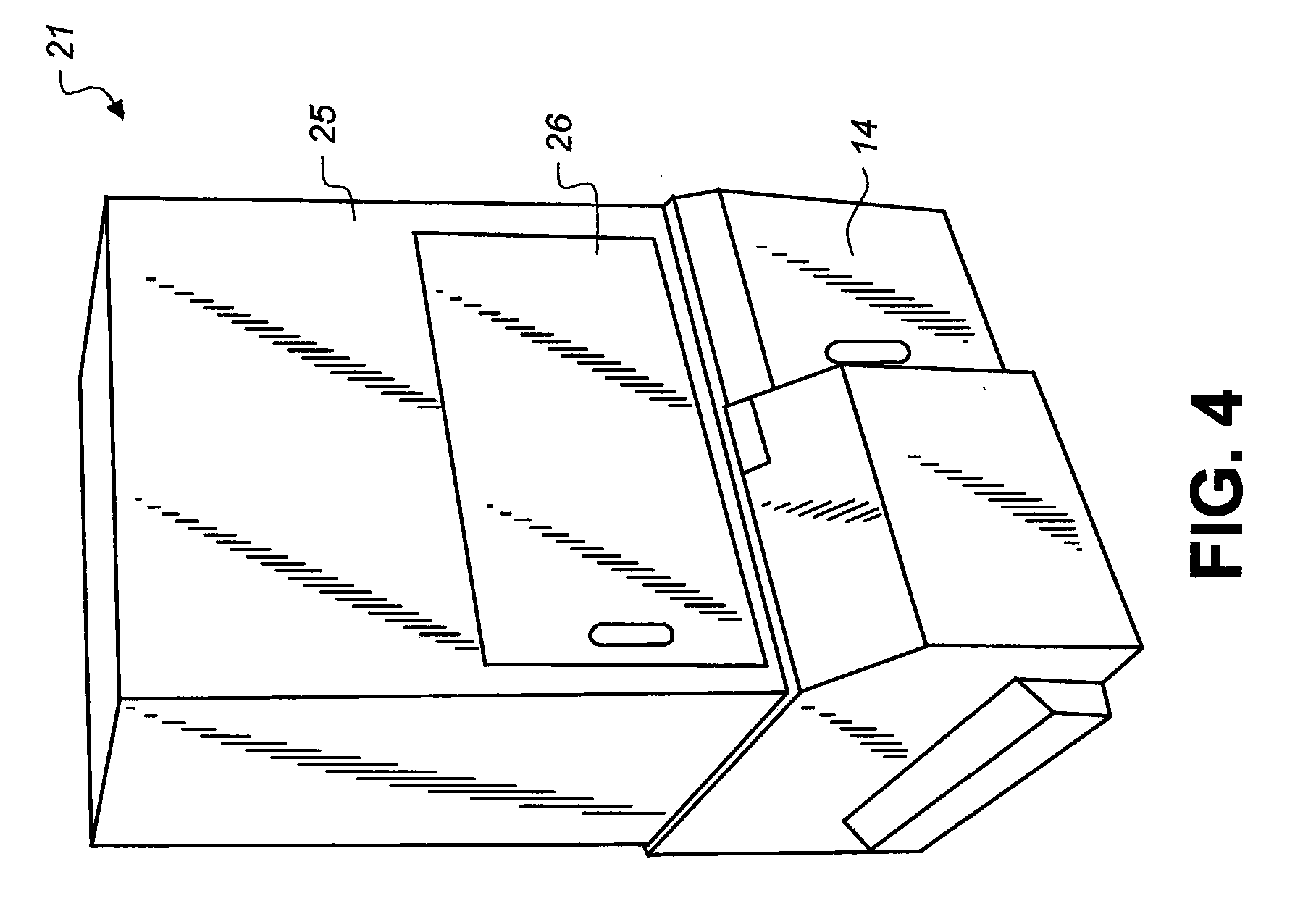Transdermal delivery of optical, spect, multimodal, drug or biological cargo laden nanoparticle(s) in small animals or humans
a nanoparticle, optical, spectral, multimodal technology, applied in the direction of instruments, applications, diagnostic recording/measuring, etc., can solve the problem of prone to lots of vagaries in tail vein injections, and achieve the effect of uniform dose delivery
- Summary
- Abstract
- Description
- Claims
- Application Information
AI Technical Summary
Benefits of technology
Problems solved by technology
Method used
Image
Examples
first embodiment
[0083]the method for attaching transdermal device 27 is shown in FIG. 11. Transdermal device 27 is positioned onto mouse 29 by sliding tail 28 into transdermal device 27 through a slot 95 as indicated by arrow 100. Transdermal device 27 is then clamped onto mouse's tail 28 by pressing device 27 closed as indicated by arrows 105 until the two halves of a latch 110 snap together insuring the absorbent section 40 containing the biological cargo-laden nanoparticle(s) mixed with a vasodilating agent or agents 42 comes into intimate contact with tail 28.
second embodiment
[0084]the method for attaching transdermal device 27 is shown in FIG. 12. Transdermal device 27 is formed in two halves 27a, 27b that are positioned onto mouse 29 by placing tail 28 between the halves and snapping the two together as indicated by arrows 115. Transdermal device 27 is then clamped onto tail 28 by pressing halves 27a, 27b closed as indicated by arrows 115 until two latches 120 snap together insuring absorbent section 40 containing the biological cargo-laden nanoparticle(s) mixed with a vasodilating agent or agents 42 comes into intimate contact with tail 28.
third embodiment
[0085]the method for attaching transdermal device 27 is shown in FIG. 13. Transdermal device 27 is made with an outer protective cover 32 formed from a malleable fluoroplastic material such as polytetrafluoroethylene (PTFE, commonly called TFE), fluorinated ethylene propylene (FEP), perfluoroalkoxy (PFA), polychlorotrifluoroethylene (CTFE), poly (ethylene-chlorotrifluoroethylene (ECTFE) copolymer, ethylene tetrafluoroethylene (ETFE), polyvinylidene fluoride (PVDF), or polyvinylfluoride (PVF). Device 27 is positioned onto mouse 29 by sliding tail 28 into a central bore 125 in device 27 and gently squeezing transdermal device 27 to mold the device securely around tail 28 as indicated by the arrows 130, thus insuring absorbent section 40 containing the biological cargo-laden nanoparticle(s) mixed with a vasodilating agent or agents 42 comes into intimate contact with tail 28.
[0086]FIG. 14 shows a diagrammatic partial view of a sample chamber 25 and sample object stage 23 of imaging sys...
PUM
 Login to View More
Login to View More Abstract
Description
Claims
Application Information
 Login to View More
Login to View More - R&D
- Intellectual Property
- Life Sciences
- Materials
- Tech Scout
- Unparalleled Data Quality
- Higher Quality Content
- 60% Fewer Hallucinations
Browse by: Latest US Patents, China's latest patents, Technical Efficacy Thesaurus, Application Domain, Technology Topic, Popular Technical Reports.
© 2025 PatSnap. All rights reserved.Legal|Privacy policy|Modern Slavery Act Transparency Statement|Sitemap|About US| Contact US: help@patsnap.com



